How art and design are connected but different: creative insights from Chitra Santhe 2020
In our final photo essay on this outstanding art festival, we share more pictorial highlights, along with artist insights on the creative journey.
Launched in 2014, PhotoSparks is a weekly feature from YourStory, with photographs that celebrate the spirit of creativity and innovation. In the earlier 430 posts, we featured an art festival, cartoon gallery. world music festival, telecom expo, millets fair, climate change expo, wildlife conference, startup festival, Diwali rangoli, and jazz festival.
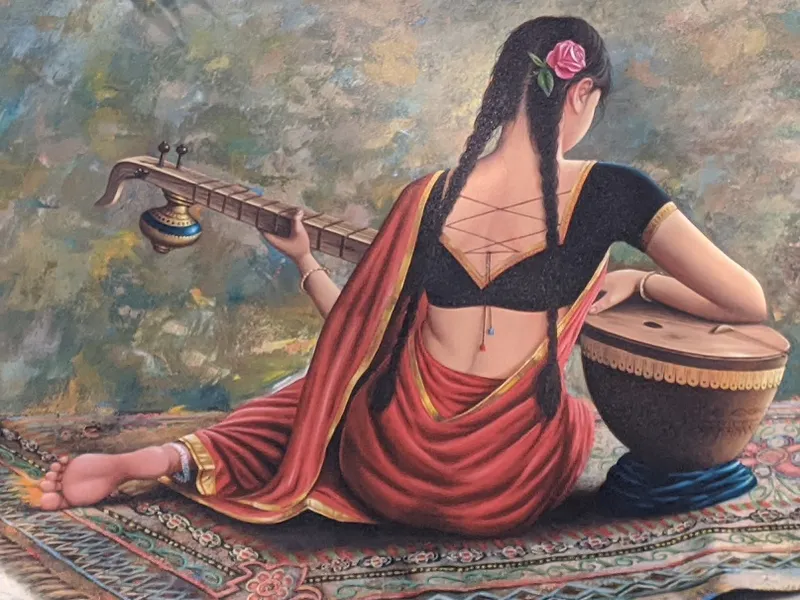
Held in Bengaluru, the 17th edition of Karnataka Chitrakala Parishath’s annual Chitra Santhe featured over 1,500 artists this year. See Part I, Part II and Part III of this photo essay series, as well as our coverage of five earlier editions of Chitra Santhe: 2019, 2018, 2017, 2016 and 2015.
With the entire stretch of Kumara Krupa Road sealed off to traffic, the outdoor street fair brings traditional and contemporary art to a broader audience, outside the confines of galleries and museums. See our earlier interviews with artists such as Manisha Mohnani, Deepthi Bhide, Jayanti Bhattacharjee, Sreelatha P, and Charita Dasappa.
“Over the years, art has become something therapeutic for me to get away from the daily humdrum of school studies and, later, corporate stress,” explains artist-designer Gazal Roongta, in a chat with YourStory. It has grown so much more, and is now a reflection of her mental and emotional stance.
Her realism and hyper-realism artwork is purely charcoal based. “I use different forms like chunks, powder, pencil, and sticks,” she adds. She uses techniques based on paste, smudge and liquid styles.
Gazal is a graphic designer at an IT company, and also hosts workshops to promote charcoal artistry. This was her first time exhibiting at Chitra Santhe, and more shows are lined up this year.
She observes that India’s art scene has boomed over the last five years. “Art is no longer seen as something luxurious, or appreciated and collected only by wealthy people. Now people from every strata of society have their own kind of art, mediums, and formats that they appreciate and prefer,” Gazal explains.
This gives rise to wonderful opportunities for professional and aspiring artists to creatively explore and figure out their own unique styles. “They don’t need to fear the ‘sell-ability’ aspect of their art while creating it,” she adds.
“While internal satisfaction and happiness with each piece of art that I create is of course of the utmost importance to me, I’ve also realised that public appreciation and commercial success gives motivation to keep going,” Gazal enthuses.
Younger audiences are admiring art more, but need to become investors in art as well. Gazal calls for broader inclusion of art awareness and appreciation in India’s education system, extending to secondary school. There need to be more events and festivals for artists to connect among themselves and the broader community.
For Chitra Santhe, Gazal prepared the works Woman Draped in Sheer and Girl with Golden Eyes. Her works are priced from Rs 2,000 to Rs 25,000. She has also received requests for larger commissioned artworks, which are pushing her out of her comfort zone.
“Woman Draped in Sheer is about the sensuous nature of a woman’s body when she’s the most comfortable in herself. I wanted to create something showcasing the confidence of that woman, without going explicit in its content,” she describes. “The folds and drape of the sheer cloth adds a softness to curves and angles that I felt charcoal is best as a medium to represent,” she adds.
“The experience at Chitra Santhe was overwhelming in the best of ways,” Gazal gushes, commenting on the feedback and inspiration she received. “There are so many people who appreciate art in all forms but just don’t know how to connect to artists and learn of the scope of art,” she observes.
“The appreciation and encouragement I received for my art was so emotional and motivational that it is beyond words. Looking at how other artists also struggle with their art and still produce such amazing stuff is something else,” Gazal adds.
She urges audiences to invest in art for their own spaces and to support artists. “Good art will not just beautify your home or workplace. It will bring long-term happiness, calmness and emotional growth for you,” she affirms.
Gazal encourages audiences to engage with artists and learn about their opinions and feelings when they were creating the art. “You will learn so much more about why the art is so important to the artist and how it is so meaningful,” she adds.
She also offers tips for aspiring artists. “Create. Learn. Create. Repeat,” she evocatively says. Artists must keep at it even if they feel uninspired or emotionally weak. “Artists never stop learning. And they can never stop creating,” she emphasises.
“Remember that art always comes from the artist’s heart. One should always want to create art out of love and from the heart’s desire. The appreciation and moolah comes in much, much later,” she describes.
“Keep striving hard to better yourself. Keep creating because you want to create, not because you have to,” Gazal urges.
She also draws connections between art and design. “Art and design are both forms of creative expressions, but are often mistakenly used as a substitute for one another. The difference is in emotional content, because design is simply more restrained than art,” Gazal explains.
“Art is so much more personal and made purely as a way to express the artist's inner emotions. All artists can and often look at their work as an extension of themselves in terms of personality,” Gazal says.
But designers often do not get that liberty because design has to adhere to concepts of accessibility, usability and consistency by their end-users. “Art is subjective to each individual, while design's main purpose is to be of consistent meaning for everyone,” Gazal says.
Despite this demarcation, she feels there is much that each field can learn from the other, and balance can be found in the middle. “Design can become more expressive and individualistic in places where it can afford to be so. Certain forms of art can become a bit more streamlined so that they can get the popularity and accessibility they often deserve,” Gazal explains.
Other insights on creativity are offered by Kochi-based artist Kanchan Rathna. “Art for me is a medium of communication, reflection and self-exploration,” she says. She explains that she is still developing her signature abstract-impressionist style, and uses a range of colours, textures and styles, including instruments like the palette knife to “add more dimension and drama.”
Kanchan’s art journey began in school with doodles and diagrams, sketched at the end of each notebook. She later took a professional course in commercial art at Nirmala Niketan, Mumbai, followed by training in 2D cel animation with Ram Mohan, regarded as the 'Father of Indian Animation.'
“My husband's job entailed a lot of movement and I could not pursue a career in animation. So I started painting and also illustrating books and magazines like The Week,” Kanchan recalls.
She cites artists like T Kaladharan and Russian artist Anna Korobitsina as key influencers. She has exhibited in Cochin, Thrissur, Hyderabad and Bengaluru, and is working on commissioned works for three clients as well. Her art works are priced from Rs 2,000 to Rs 50,000.
“The art scene in India is burgeoning and very dynamic,” Kanchan enthuses, pointing to the rise of art camps and residencies, and mega-events like the Kochi Biennale (see our coverage here). Such events help promote, popularise, and educate people about art.
She describes many layers of success for an artist, not just money or fame. “I find even a small event that involves engagement and acknowledgement from complete strangers to be very gratifying,” she gushes.
“Though sales, awards and recognition do provide satisfaction and encouragement to strive even harder, internal exploration and continuous learning is an integral part of my journey. Every new experience or project adds on to it,” Kanchan explains.
She calls for more art education in homes and schools, with curricula that encourage creativity and out-of-the-box thinking. “A lot of new-age schools now encourage teaching subjects like mathematics and sciences through art,” she observes.
This was her second time exhibiting at Chitra Santhe. “Many of the visitors understand and prefer simple, tangible art. So I prepared some pieces with simple themes and smaller formats,” Kanchan explains. The experience at the festival was “encouraging as well as overwhelming,” and she received feedback on new themes and materials.
She urges audiences to respect the artist and the love and creativity they have put into their artworks, which are an extension of themselves. “They are not factory-created and mass-produced home decor items,” she adds.
Appreciation also varies with context. “What seems like random brushstrokes of myriad hues to one person might invoke a very special reaction or connection in another,” Kanchan explains. She offers tips for aspiring artists as well.
“Strive hard to create original pieces of art. Observe and learn from day to day happenings, because even something mundane could be the start of a new idea,” she adds. “And practice, practice, practice,” Kanchan signs off.
Now, what have you done today to pause in your busy schedule and persevere in exploring all facets of your creative side?
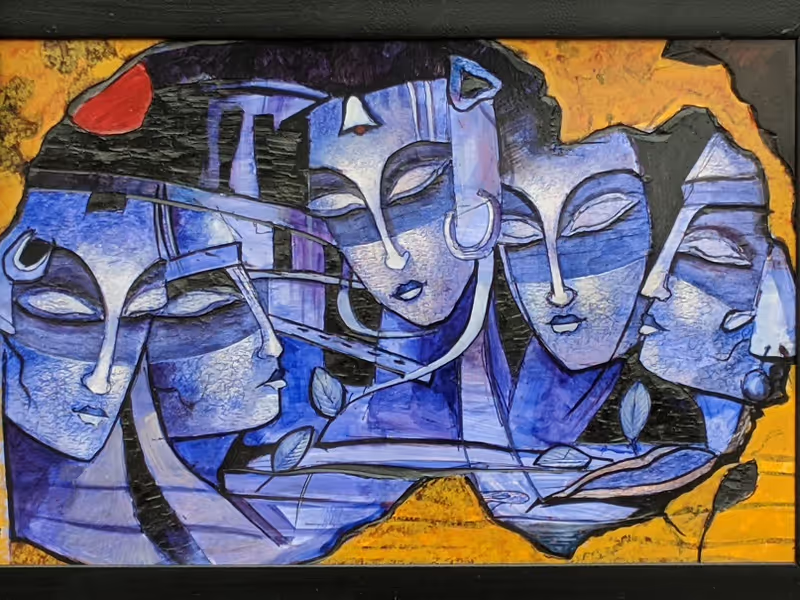

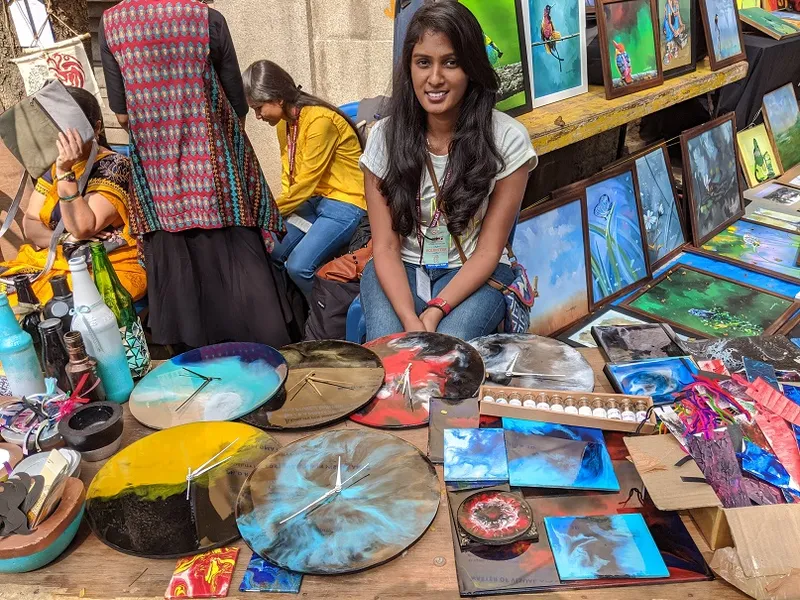
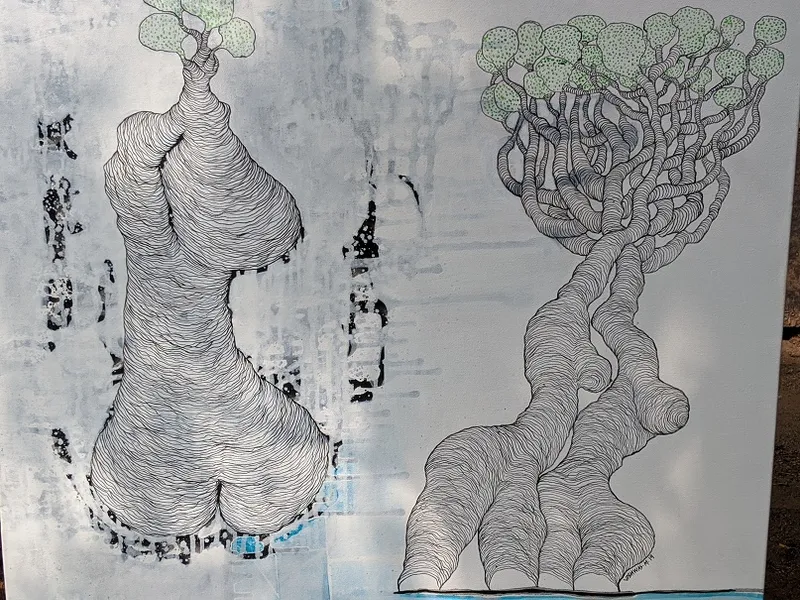
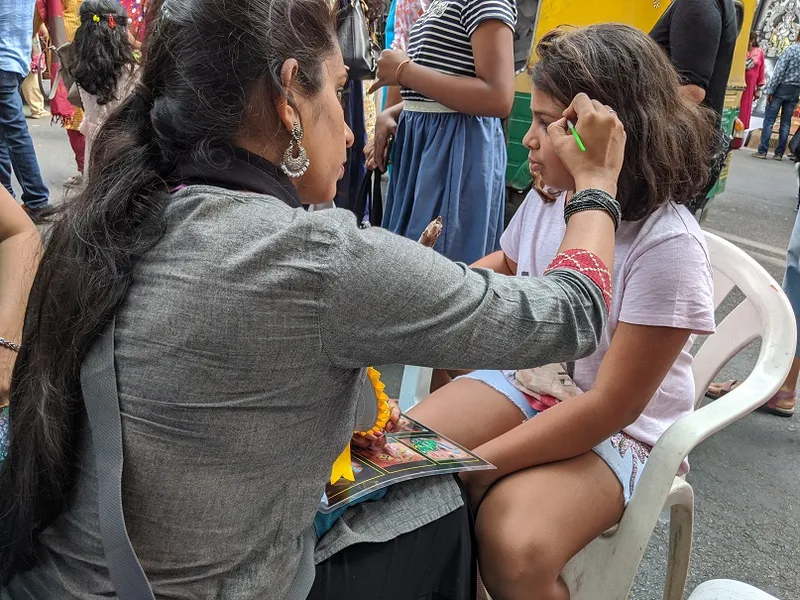
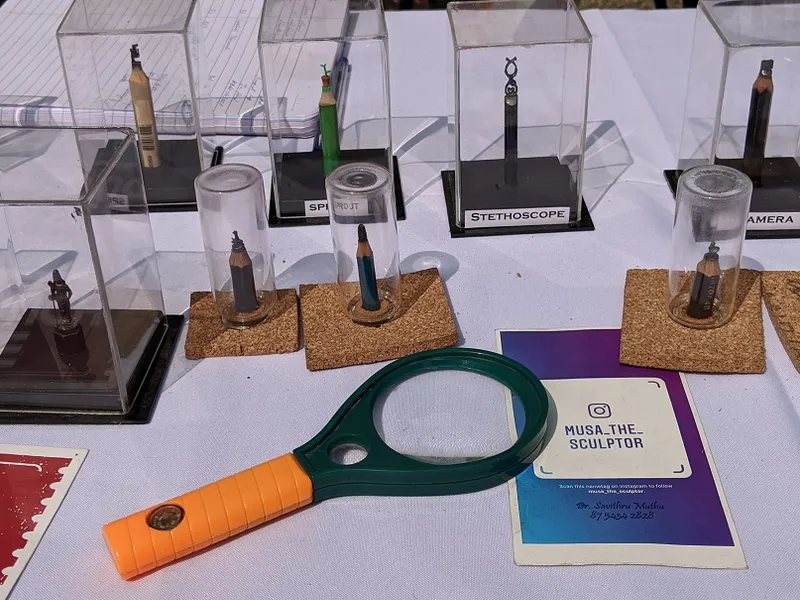
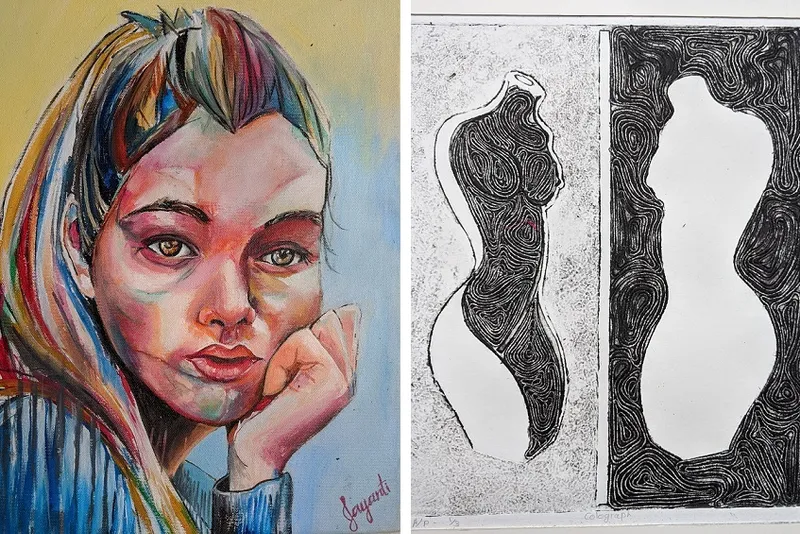
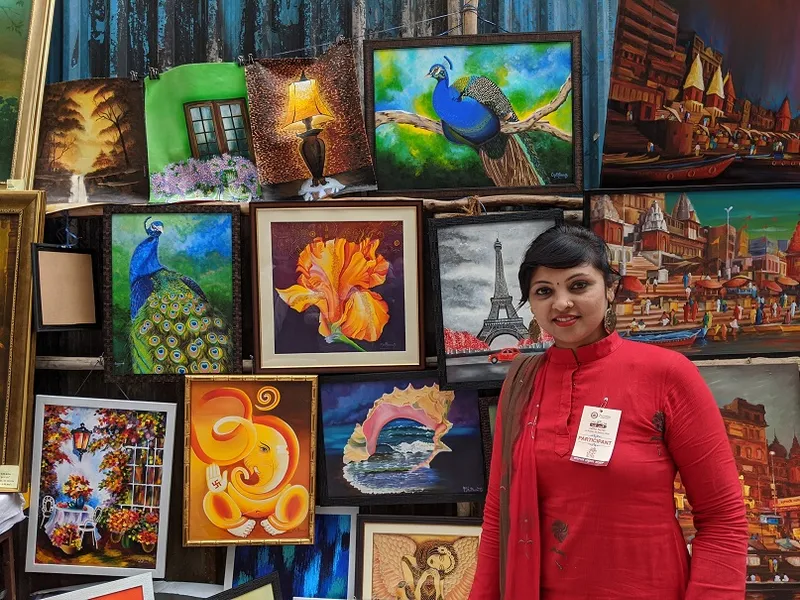
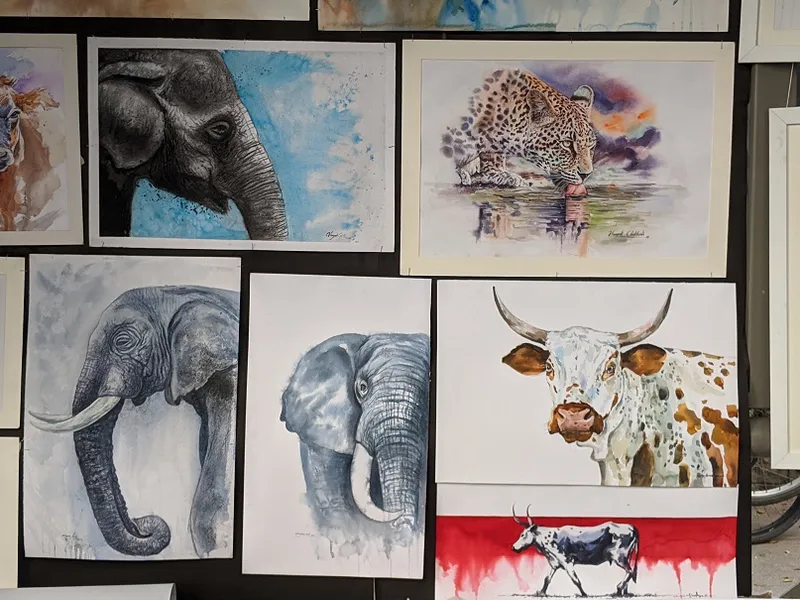
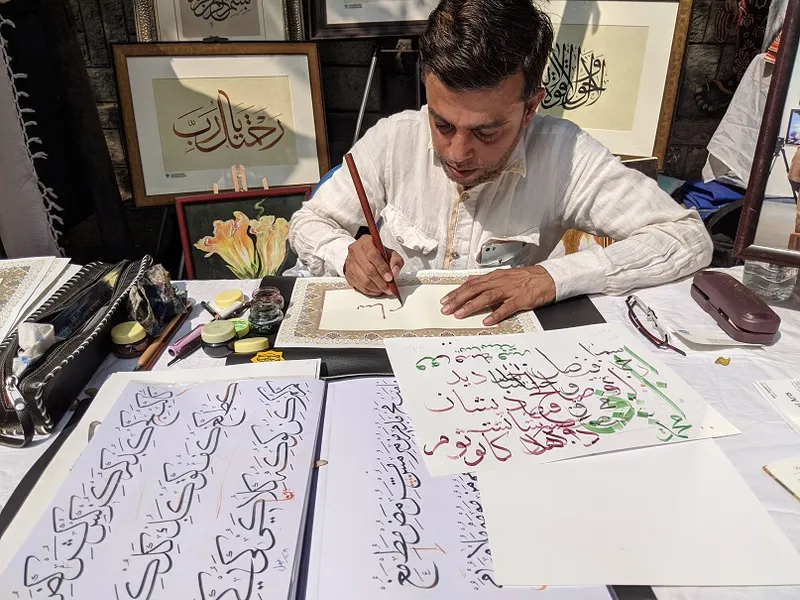
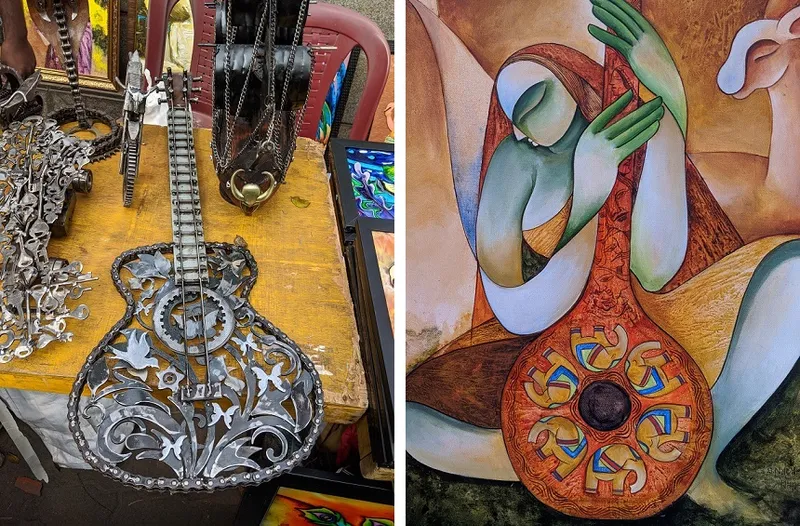

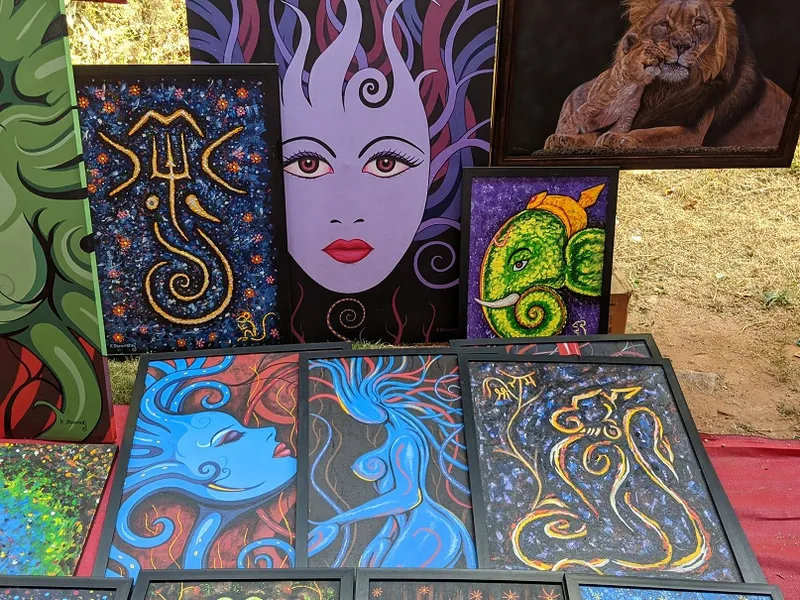
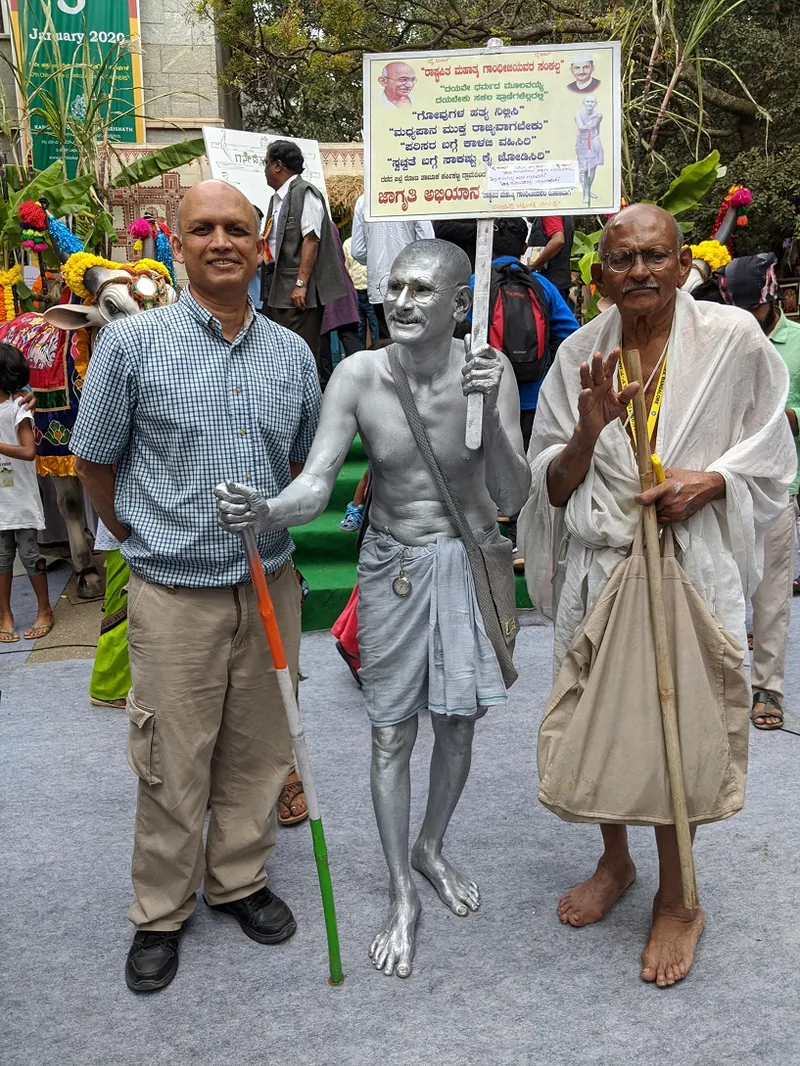
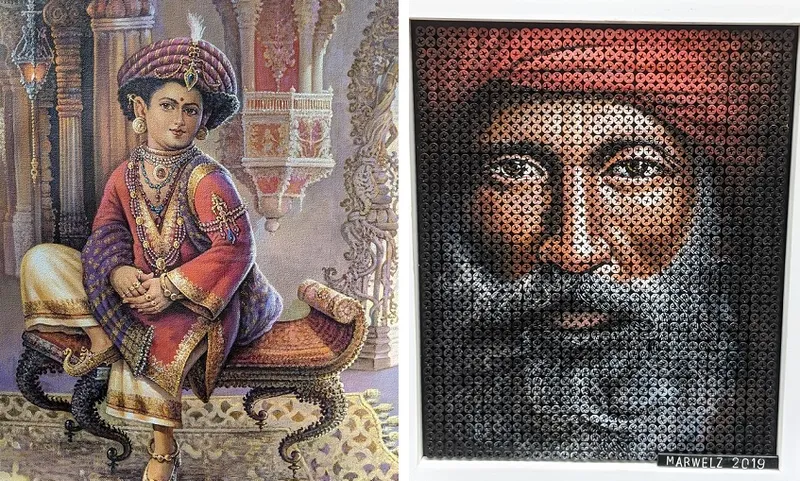
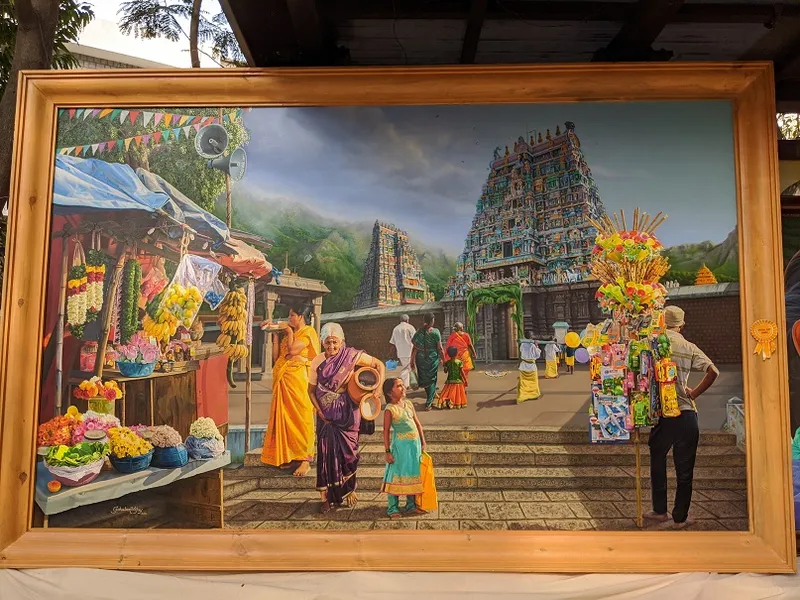
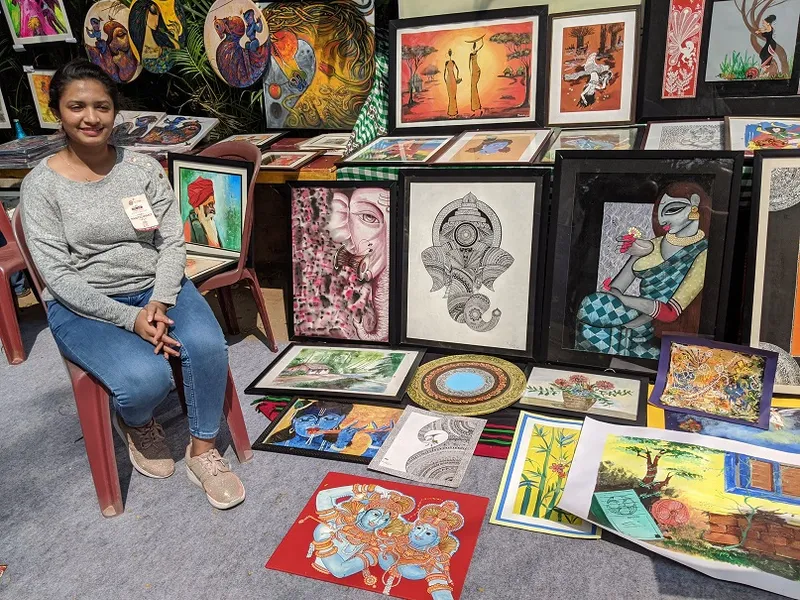
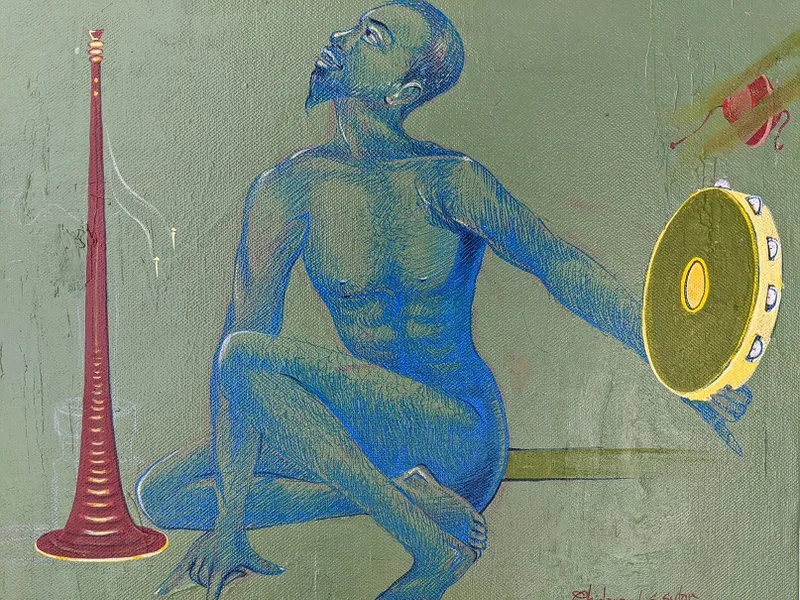
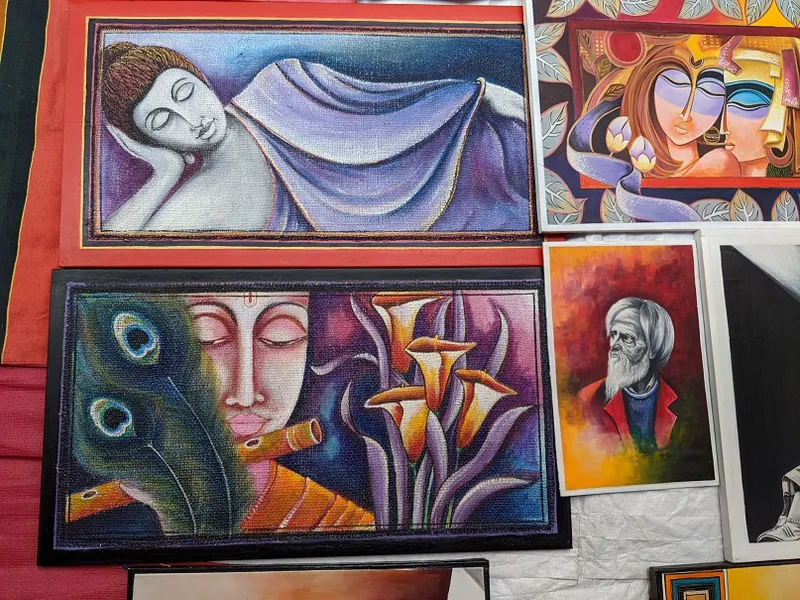
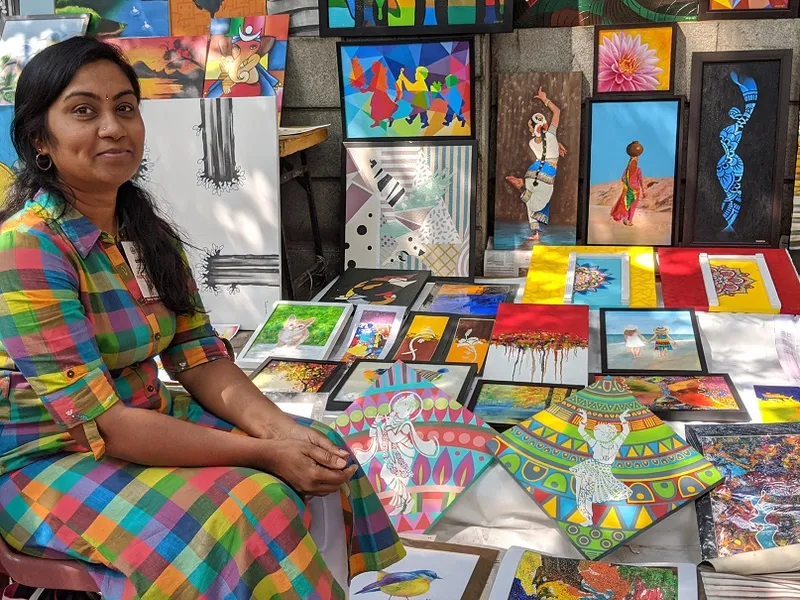
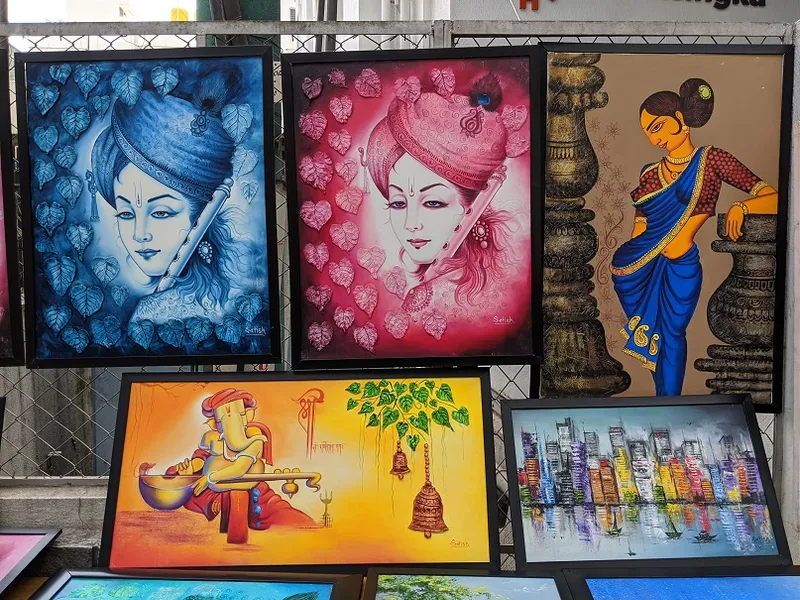
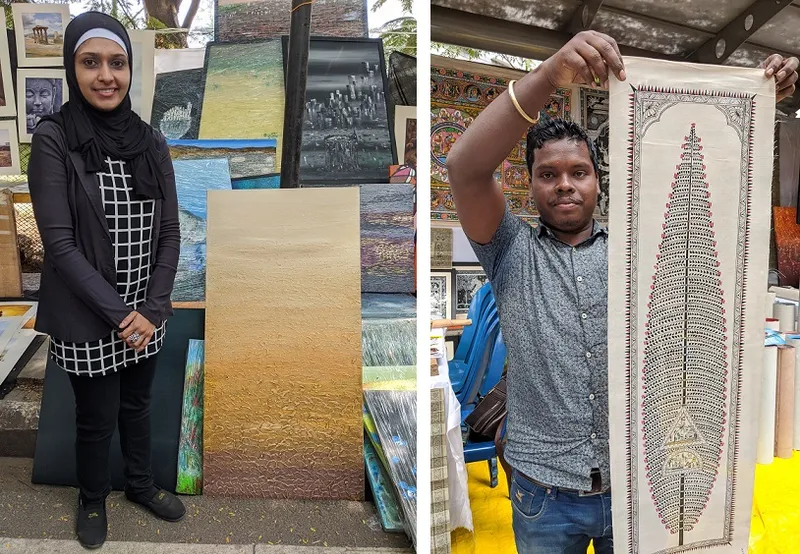
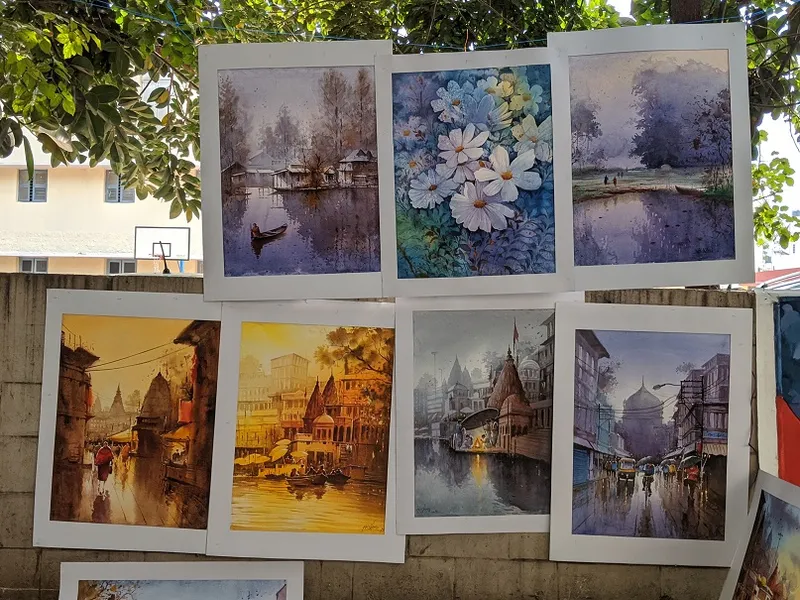
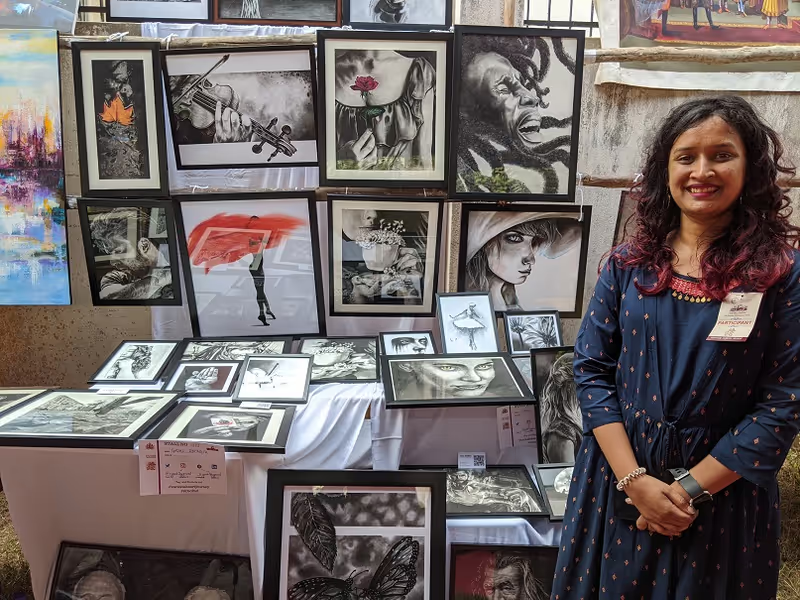
Got a creative photograph to share? Email us at PhotoSparks@YourStory.com!
See also the YourStory pocketbook ‘Proverbs and Quotes for Entrepreneurs: A World of Inspiration for Startups,’ accessible as apps for Apple and Android devices.


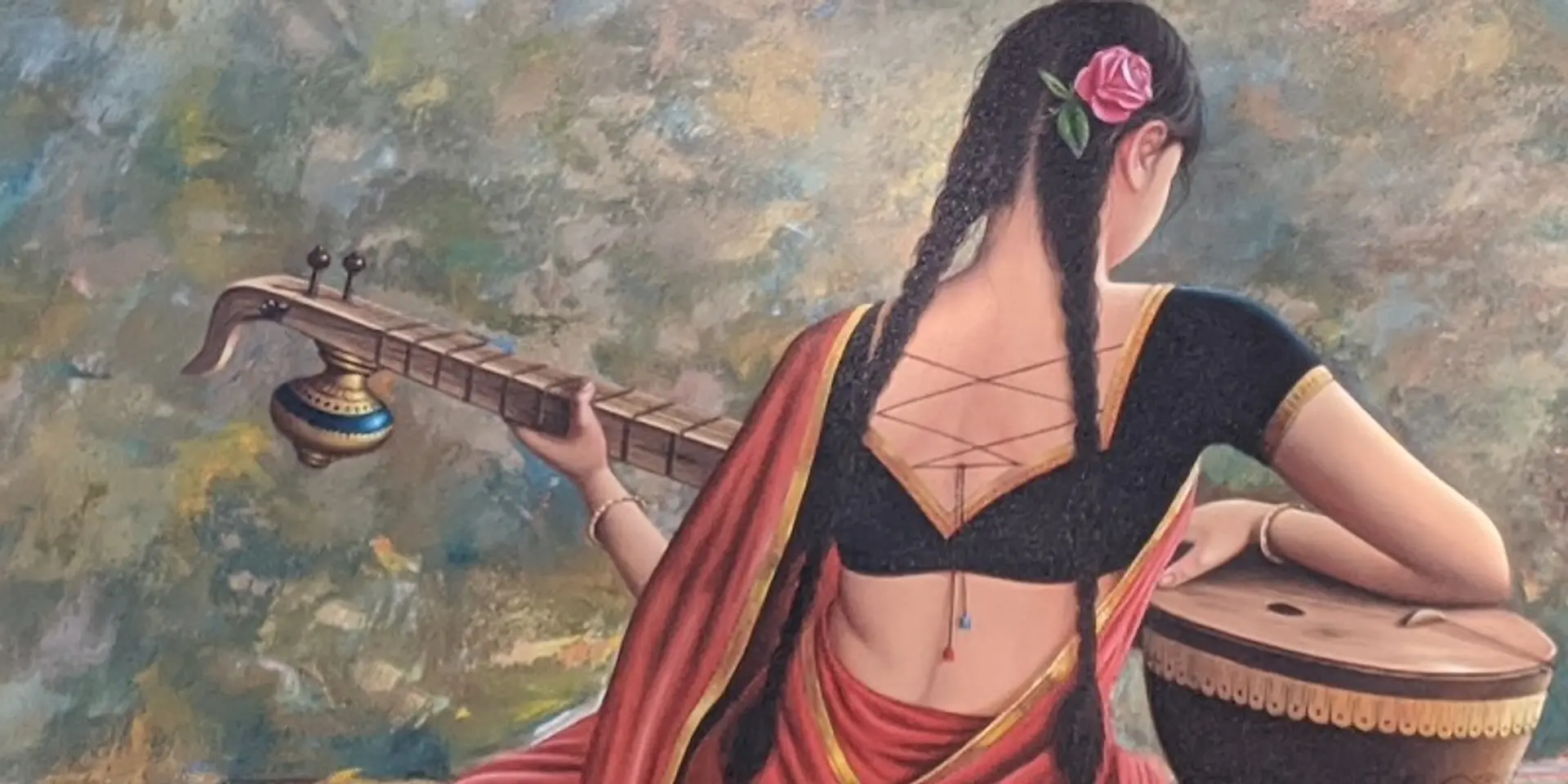
1551943902752.png?fm=png&auto=format&h=100&w=100&crop=entropy&fit=crop)





